240V to 120V AC Streetlight Power Tap Adapter for Public Cameras (Case of Pelco)
The world over, streetlights are transcending their traditional role of illumination. They have been put to use by many cities and municipalities, supporting several smart city initiatives like traffic surveillance cameras and public Wi-Fi access points among many others. Their numbers, strategic location and presence of readily available power provide a base for building these smart infrastructure.
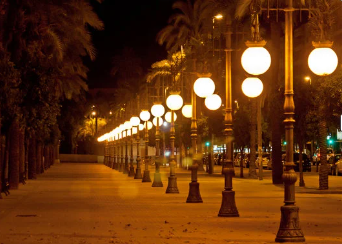 Street with Decorative Lights
Street with Decorative LightsProducts discussed in this article:
- FP289A-120-CNB (240V to 120V AC, 50W, Continuous on tap, 3 pin, 10 ft. cable)
- FP289A-120-CNB-A (240V to 120V AC, 50W, Continuous on tap, 7 pin, 10 ft. cable)
- FP289A-120-CNK (240V to 120V AC, 100W, Continuous on tap, 3 pin, 10 ft. cable)
- FP289A-120-CNK-A (240V to 120V AC, 100W, Continuous on tap, 7 pin, 10 ft. cable)
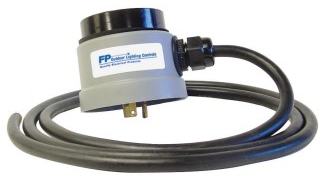 3 pin power tap - Installs on the topside of luminaire
3 pin power tap - Installs on the topside of luminaireThe top image is of an FP289A step down series streetlight power tap adapter, it is used to safely tap power from the 240V AC luminaire and deliver it to any ancillary device using a user specified cable and connector. Its output is regulated 120V AC at either 50 or 100W.
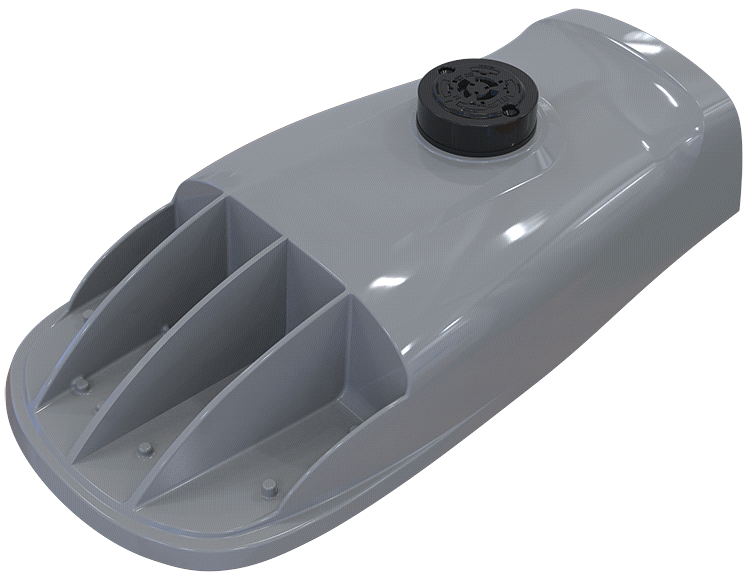 Streetlight Luminaire topside with 3 Pin Receptacle (ANSI C136.10 standard compliant)
Streetlight Luminaire topside with 3 Pin Receptacle (ANSI C136.10 standard compliant)The unit installs between the luminaire receptacle and the photocontrol device without affecting normal photocontrol and dimming operations as shown below.
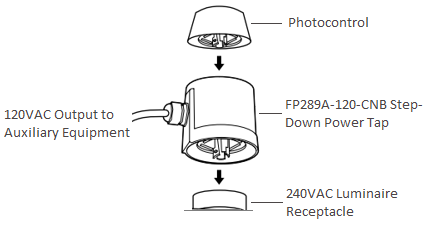 FP289A Series Power Tap Connection
FP289A Series Power Tap ConnectionIn this article, we look at the ease of accessing AC power available at the light pole/ luminaire and using the same to power any ancillary equipment. Specifically, we discuss how a user would power a surveillance camera such as the Pelco (***) from a luminaire supplied with a 240V AC. We will look at surveillance/ traffic cameras because they are vital for monitoring and ensuring safety on our roadways.
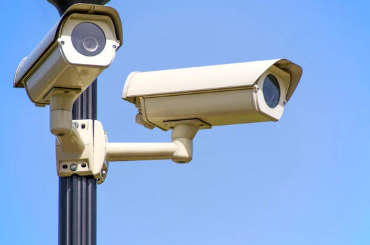 Surveillance Camera on Light Pole
Surveillance Camera on Light Pole
Within the USA streetlights can be supplied with either 120 or 277V (line to neutral voltages) or 208, 240 or 480V (line to line voltages). Large scale installations operate on 480V AC 3 phase feeds, supplying 277V to individual luminaires (phase to ground) .
120V is commonly used for streetlights in residential areas and for smaller-scale commercial or urban lighting installations. It is the standard voltage level for most residential and low-power commercial lighting applications.

An interesting note on this point: For streetlighting it is usually advisable to work with whatever voltage is readily available. However, the lower the operational voltage the higher the current and the greater the voltage drop as the current moves along the conductor resistance from one luminaire to the next. This voltage drop is a result of the I2R losses. What voltage would you then term as ideal?
The units are available with various cable termination options, the default being a wire end termination. A two pin female receptacle or a mini- link connector can be added on request.
Feel free to consult our power solutions specialists for your next project, we are always ready to help.
Related Articles
Frequently Asked Questions: Streetlight Power Tap Adapters
A streetlight power tap adapter is a device that allows you to tap into the power supply of a streetlight. It installs between the ANSI C136.10 receptacle on top of the luminaire and the photocell without interfering with normal photocontrol ...Dusk to Dawn Streetlight Power for Outdoor Decorative Lights
Outdoor decorative/ holiday lights have the ability to convert regular spaces into warm, safe and inviting landscapes; consistently serving as sources of beauty and inspiration within communities during the festive season. It is true that most, if ...Cisco AIR-PWR-ST-LT-R3P Streetlight Power Tap Cisco Aironet Series
The Cisco AIR-PWR-ST-LT-R3P is a Streetlight Power Tap designed for the Aironet Series of wireless access points. The unit installs between the luminaire receptacle and the photocontrol device without affecting normal photocontrol and dimming ...Powering the Pelco Spectra Enhanced IR Look Up 7 Series - 2 MP 30x Surveillance Camera using 240VAC Streetlight Power
Integrating advanced surveillance systems into urban environments demands both exceptional technology and reliable power sources. The Pelco Spectra Enhanced 7 Series cameras offer state-of-the-art surveillance capabilities, providing high-quality ...Powering Aruba 580 Series Outdoor Access Points using AEL 247L LED Streetlight Luminaire - American Revolution
With its exceptional Wi-Fi 6 performance, the Aruba 580 Series Outdoor Access Points are a great choice for harsh outdoor settings. These access points include 5 Gbps Ethernet connectivity in addition to high-power Bluetooth and Zigbee radios. Aruba ...